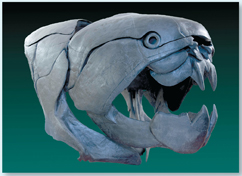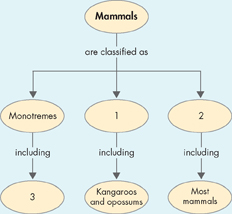26 Study Guide
 Evolution
Evolution
Invertebrates and chordates share common structures that emphasize that all animals descended, with modifications, from common ancestors.
26.1 Invertebrate Evolution and Diversity
 Fossil evidence indicates that the first animals began evolving long before the Cambrian Explosion.
Fossil evidence indicates that the first animals began evolving long before the Cambrian Explosion.
 The cladogram of invertebrates presents current hypotheses about evolutionary relationships among major groups of modern invertebrates. It also indicates the sequence in which some important features evolved.
The cladogram of invertebrates presents current hypotheses about evolutionary relationships among major groups of modern invertebrates. It also indicates the sequence in which some important features evolved.
26.2 Chordate Evolution and Diversity
 Embryological studies suggest that the most ancient chordates were related to the ancestors of echinoderms.
Embryological studies suggest that the most ancient chordates were related to the ancestors of echinoderms.
 The cladogram of chordates presents current hypotheses about relationships among chordate groups. It also shows at which points important vertebrate features, such as jaws and limbs, evolved.
The cladogram of chordates presents current hypotheses about relationships among chordate groups. It also shows at which points important vertebrate features, such as jaws and limbs, evolved.


26.3 Primate Evolution
 A primate is a mammal that has relatively long fingers and toes with nails instead of claws, arms that can rotate around shoulder joints, a strong clavicle, binocular vision, and a well-developed cerebrum.
A primate is a mammal that has relatively long fingers and toes with nails instead of claws, arms that can rotate around shoulder joints, a strong clavicle, binocular vision, and a well-developed cerebrum.
 Primates in one group look very little like typical monkeys and include lemurs and lorises. The other group includes tarsiers and the anthropoids, the group that includes monkeys and humans.
Primates in one group look very little like typical monkeys and include lemurs and lorises. The other group includes tarsiers and the anthropoids, the group that includes monkeys and humans.
 The skull, neck, spinal column, hip bones, and leg bones of early hominine species changed shape in ways that enabled later species to walk upright.
The skull, neck, spinal column, hip bones, and leg bones of early hominine species changed shape in ways that enabled later species to walk upright.
 Many species in our genus existed before our species, Homo sapiens, appeared. Furthermore, at least three other Homo species existed at the same time as early humans.
Many species in our genus existed before our species, Homo sapiens, appeared. Furthermore, at least three other Homo species existed at the same time as early humans.
binocular vision (765)
hominine (767)
anthropoid (766)
bipedal (767)
prehensile tail (767)
opposable thumb (767)
hominoid (767)
Think Visually Using information from this chapter, complete the following concept map.
Table of Contents
- Formulas and Equations
- Applying Formulas and Equations
- Mean, Median, and Mode
- Estimation
- Using Measurements in Calculations
- Effects of Measurement Errors
- Accuracy
- Precision
- Comparing Accuracy and Precision
- Significant Figures
- Calculating With Significant Figures
- Scientific Notation
- Calculating With Scientific Notation
- Dimensional Analysis
- Applying Dimensional Analysis





